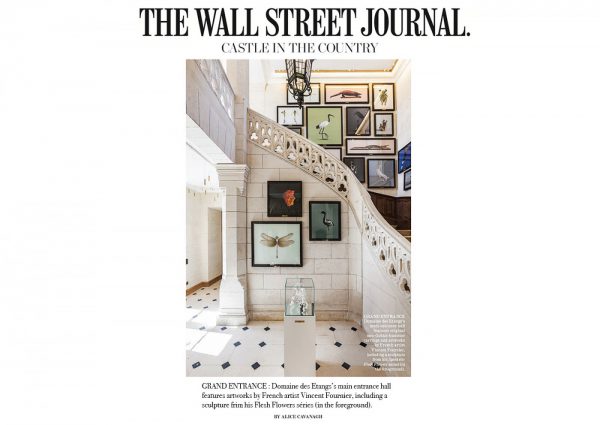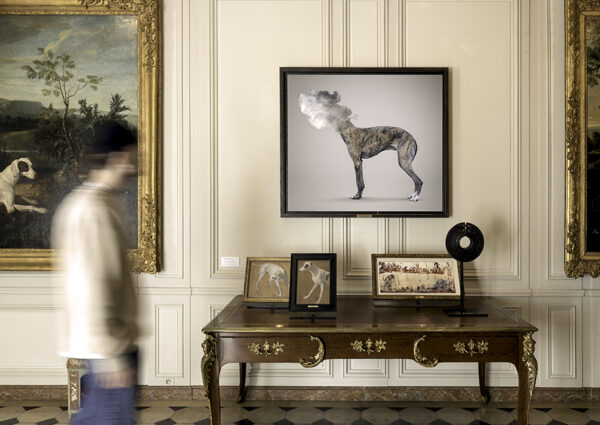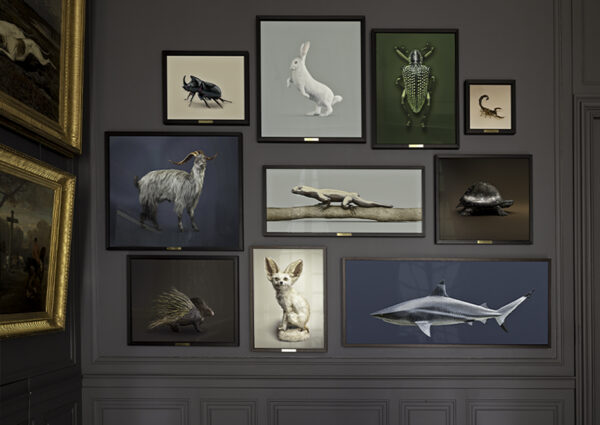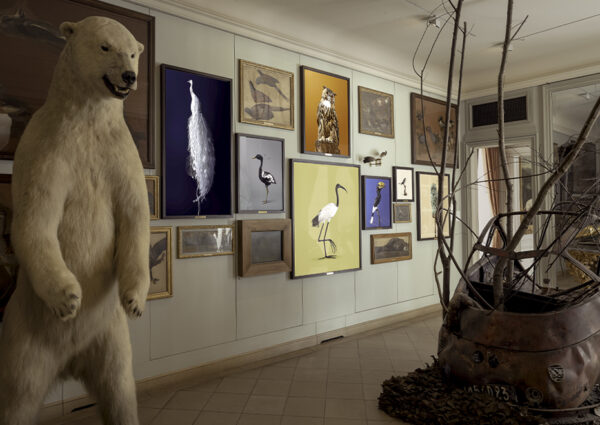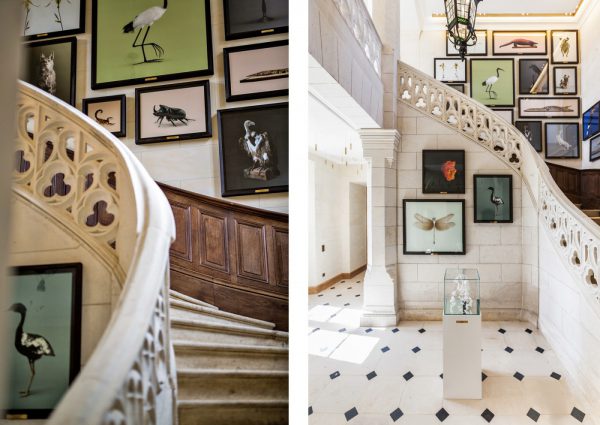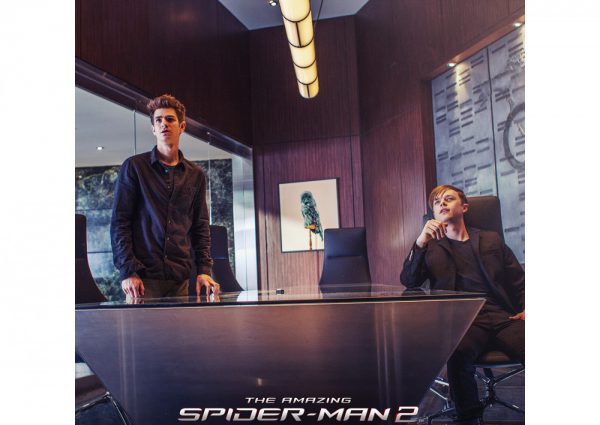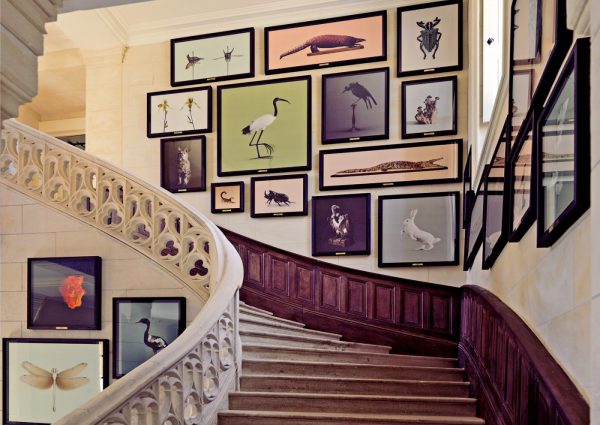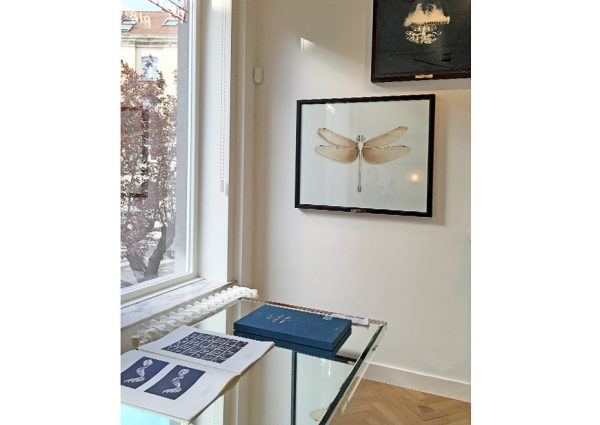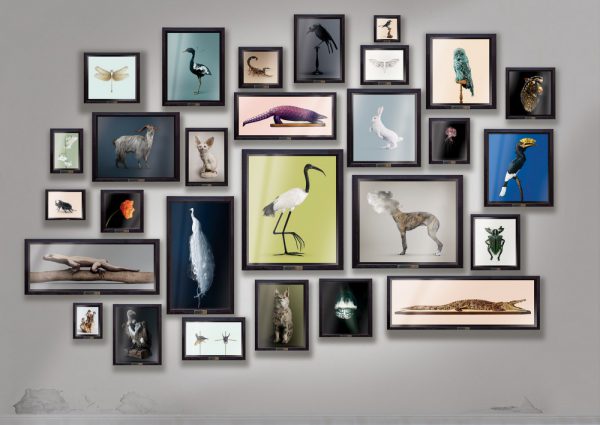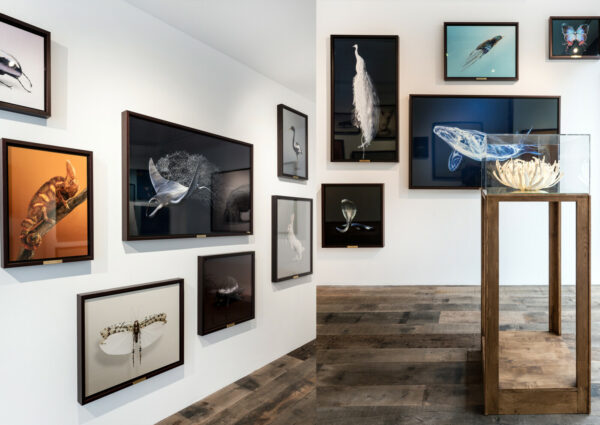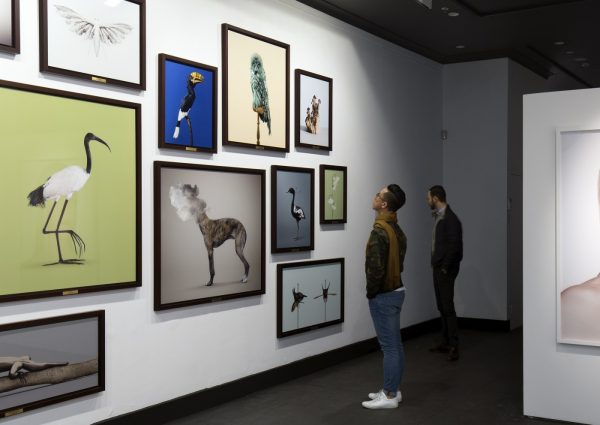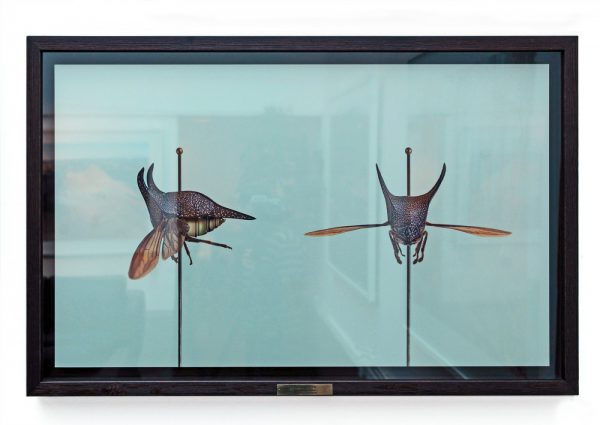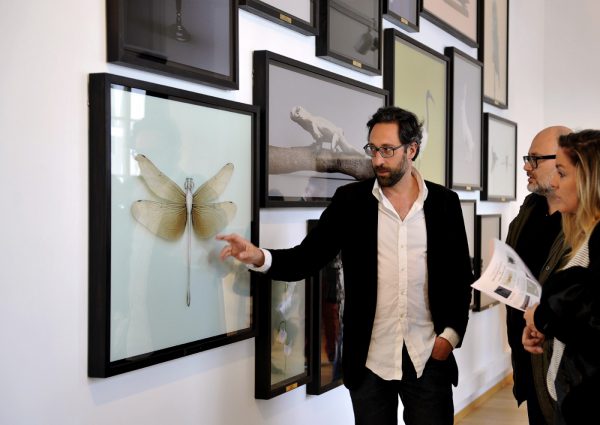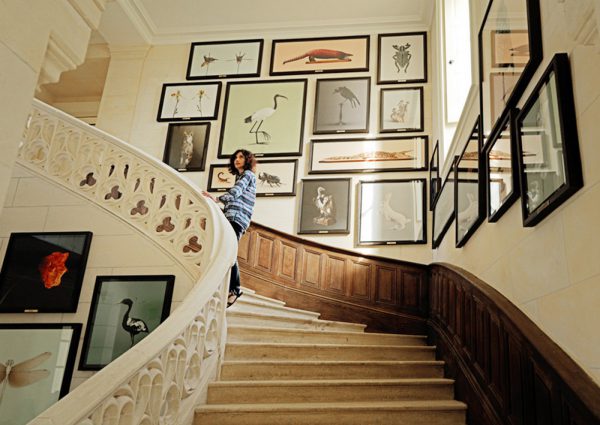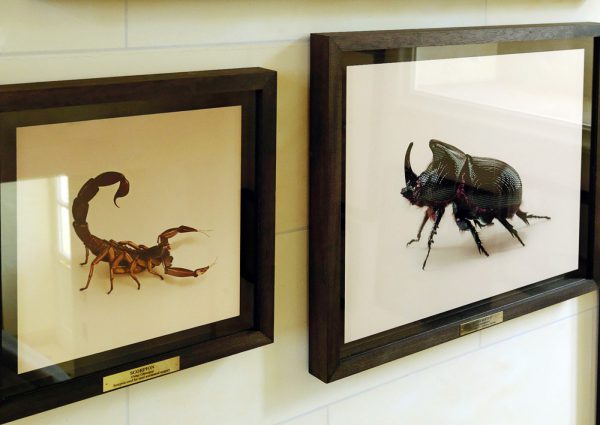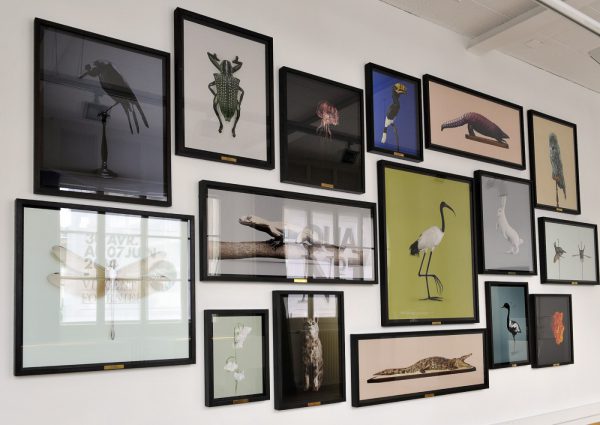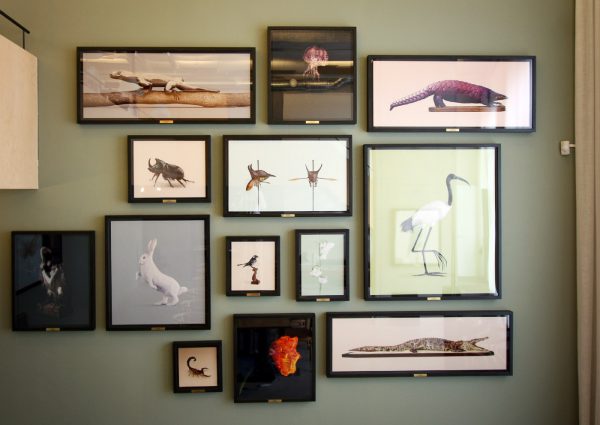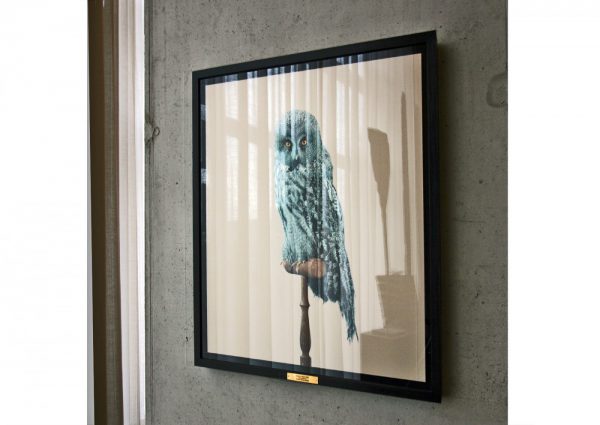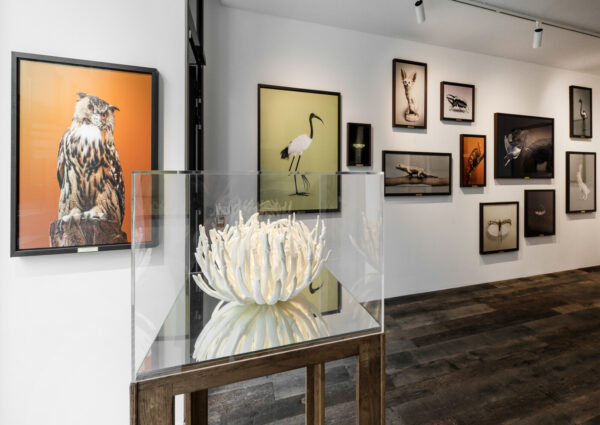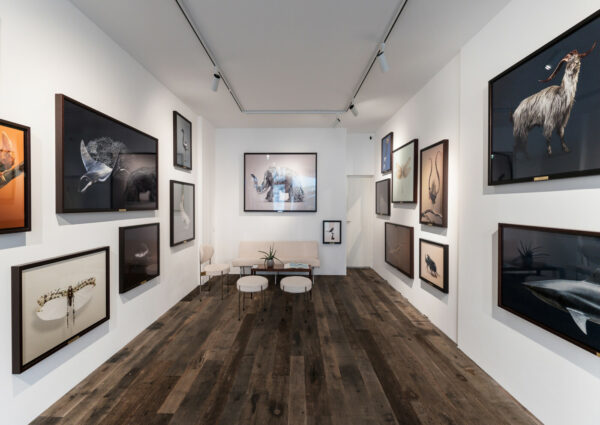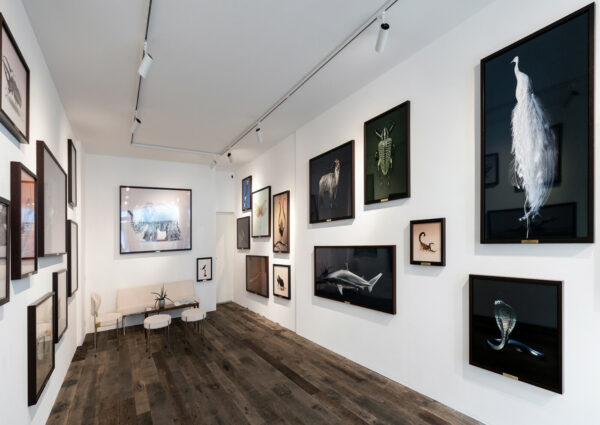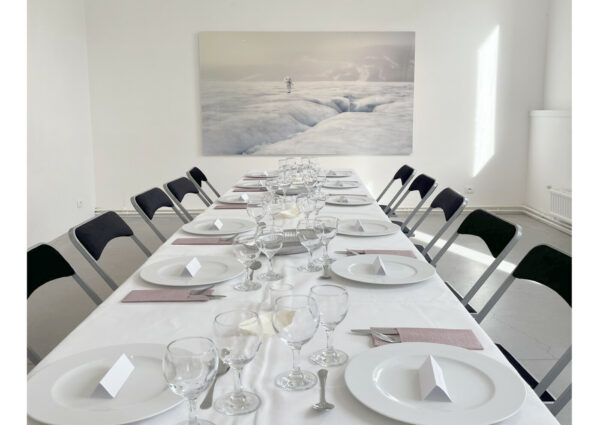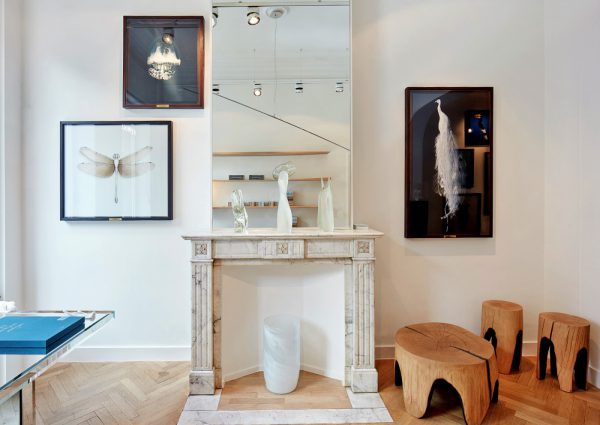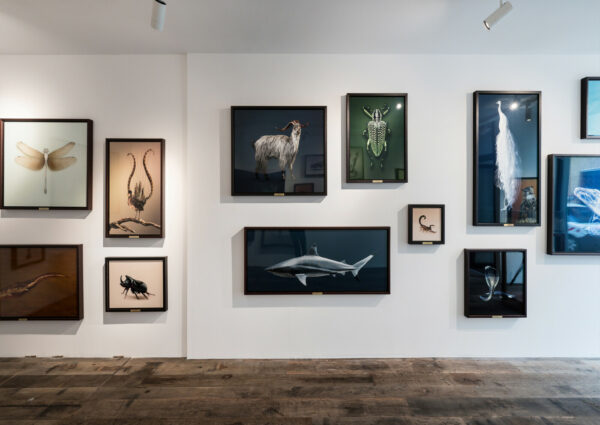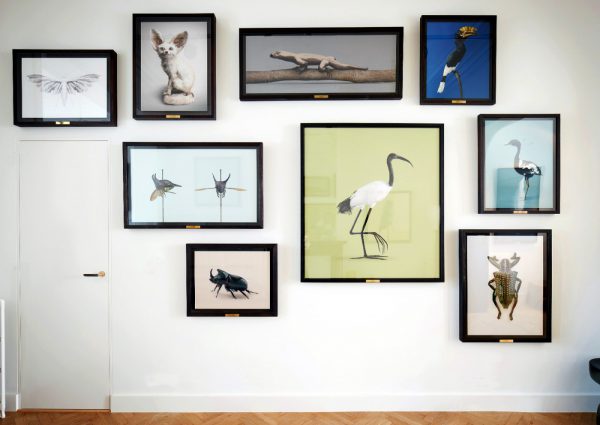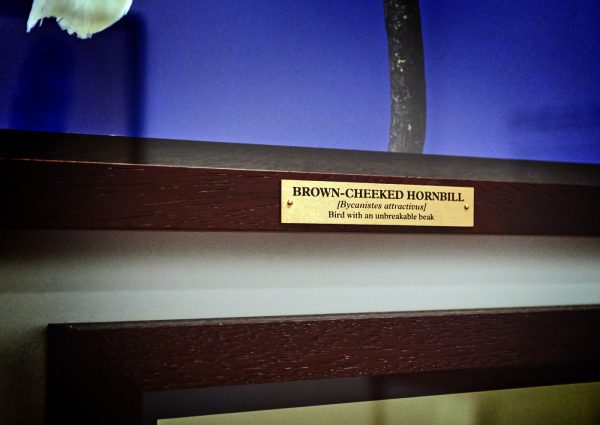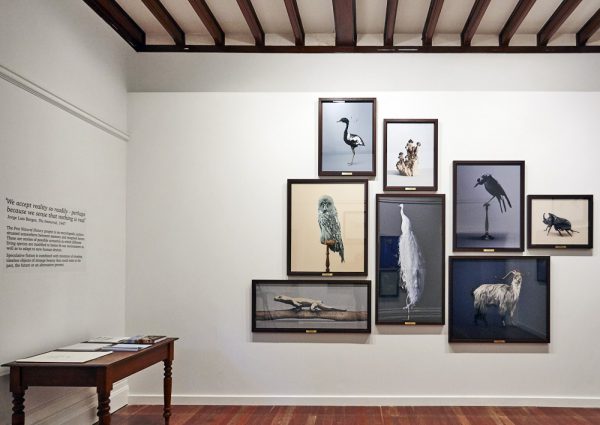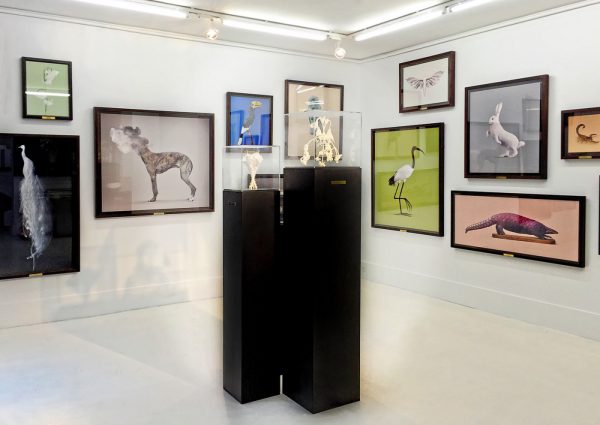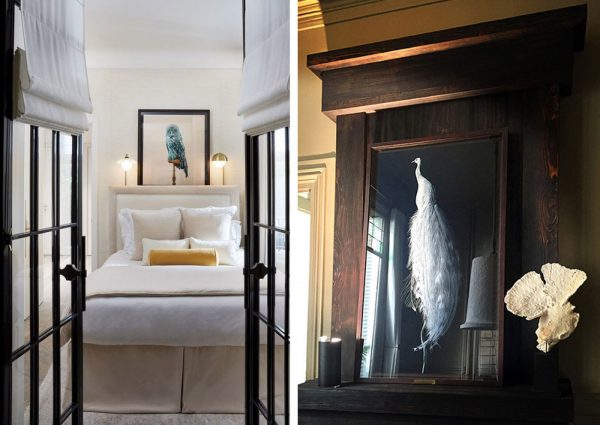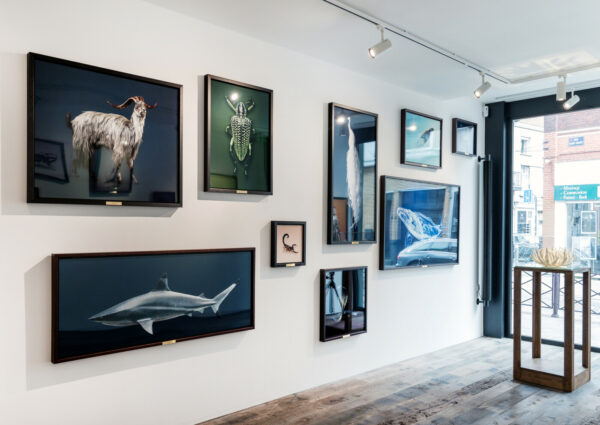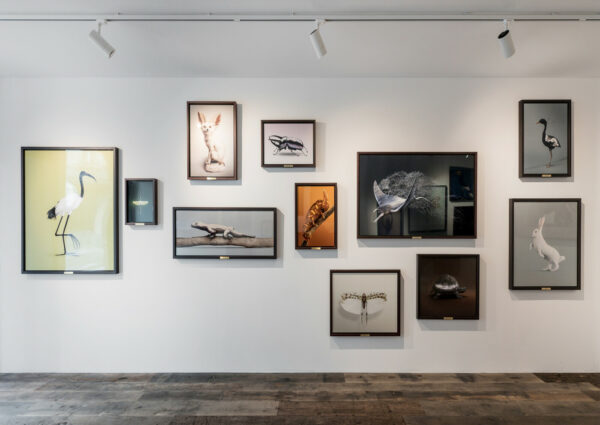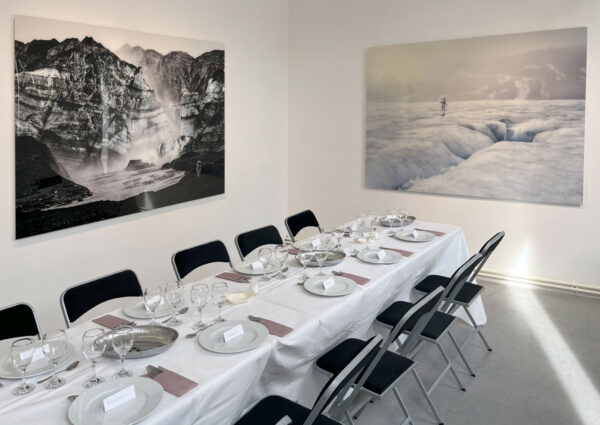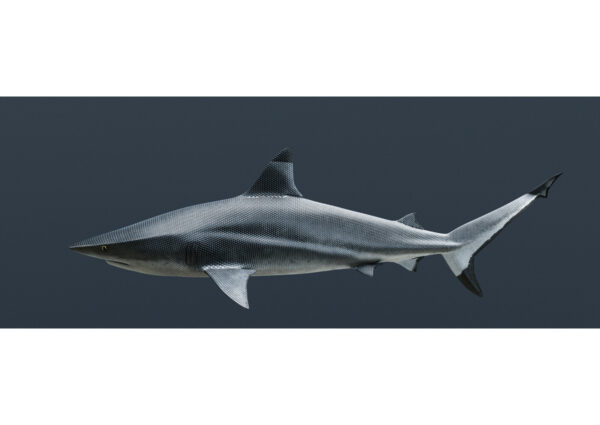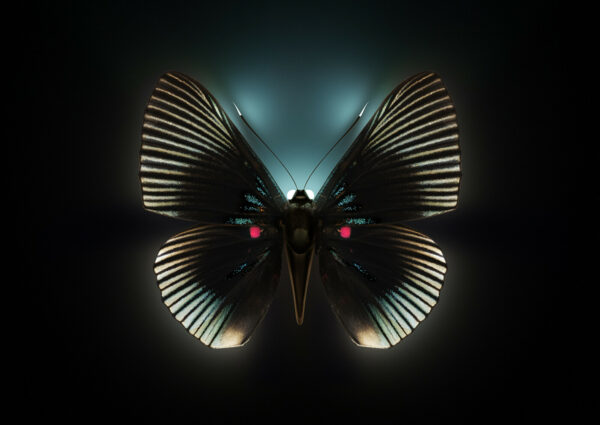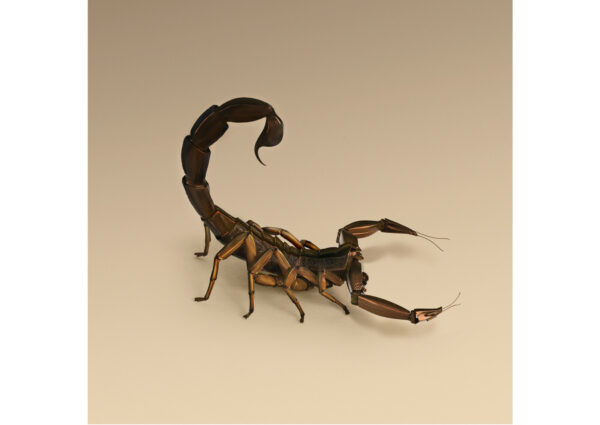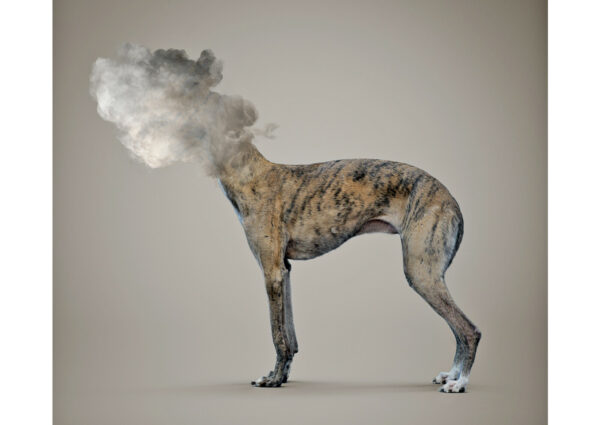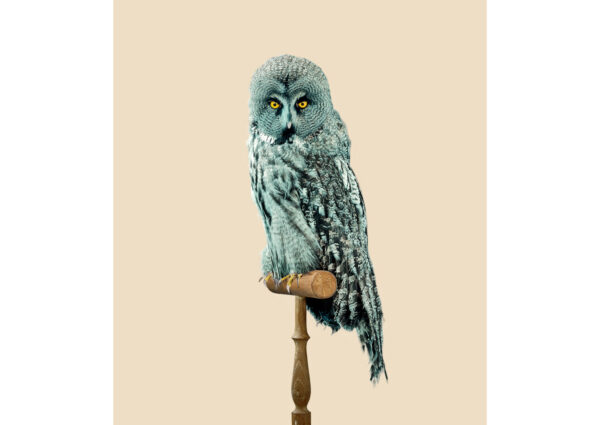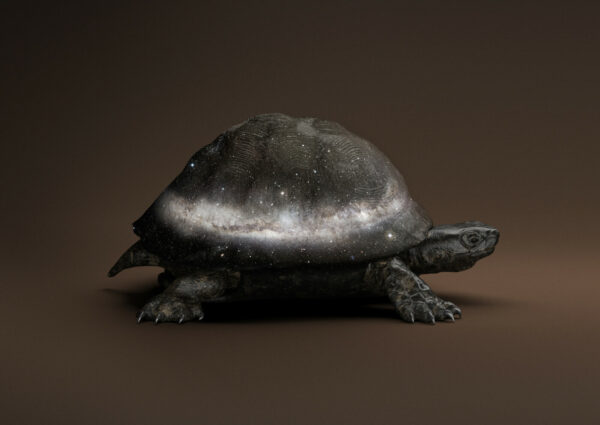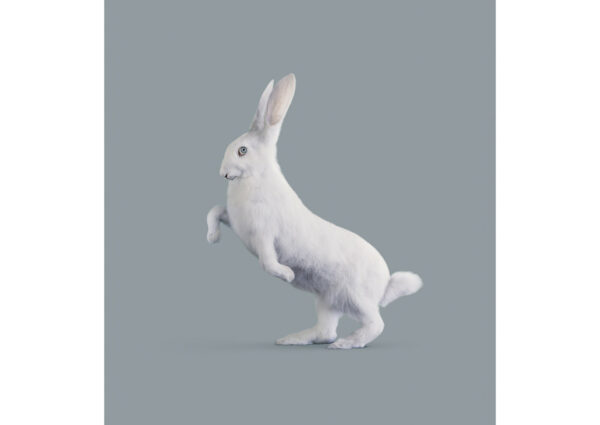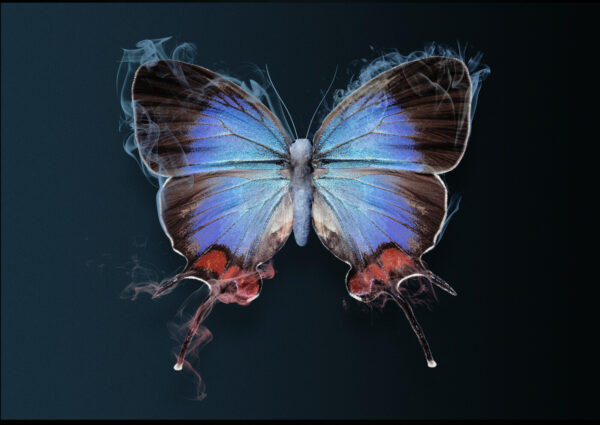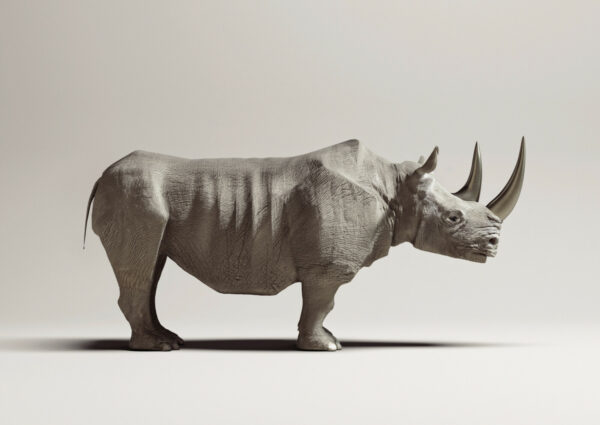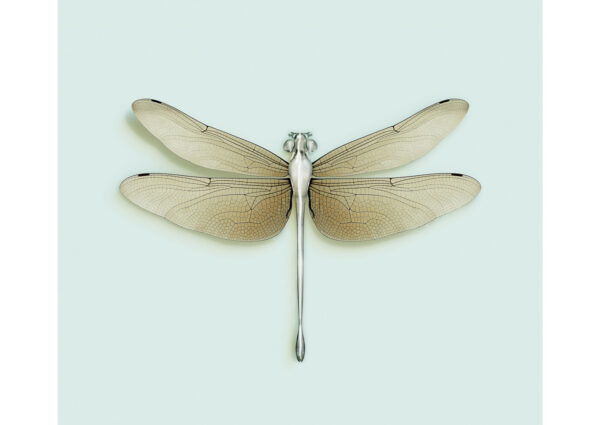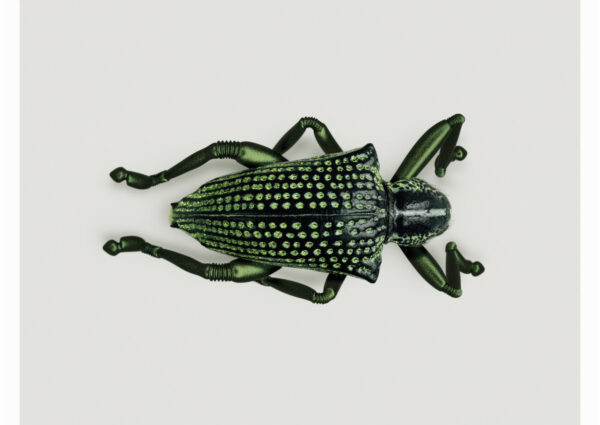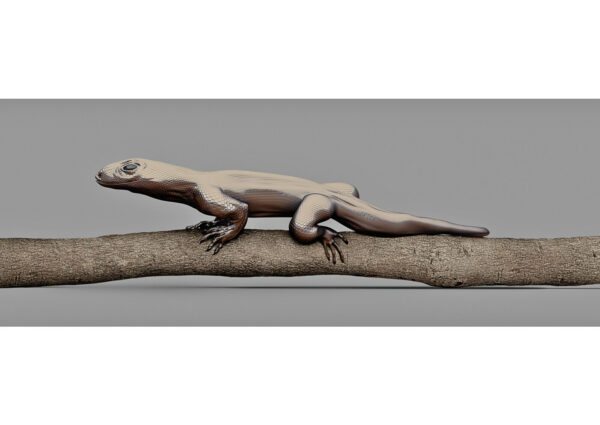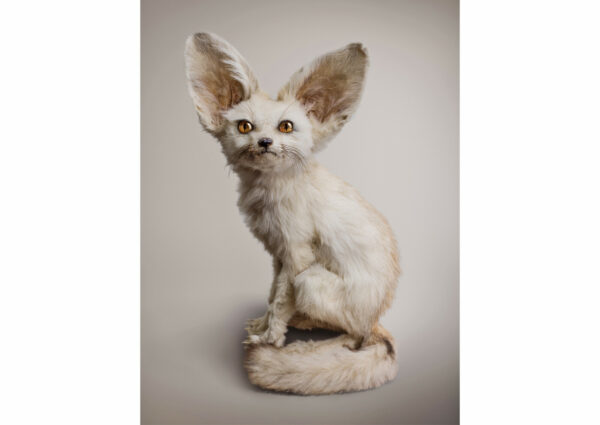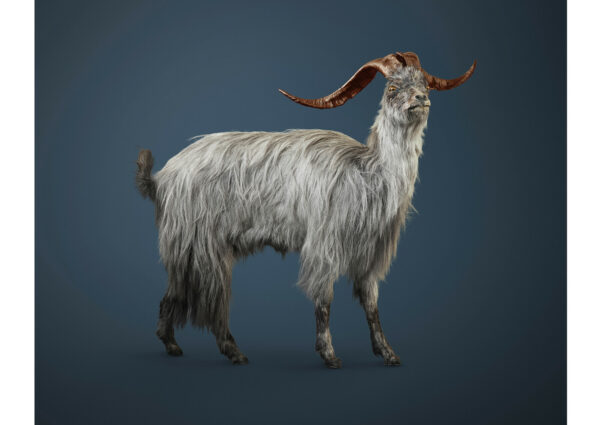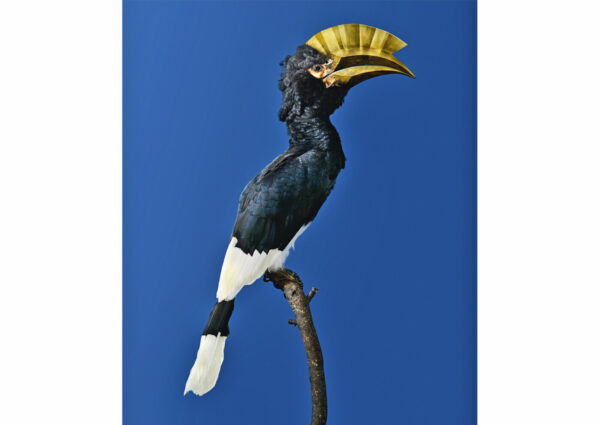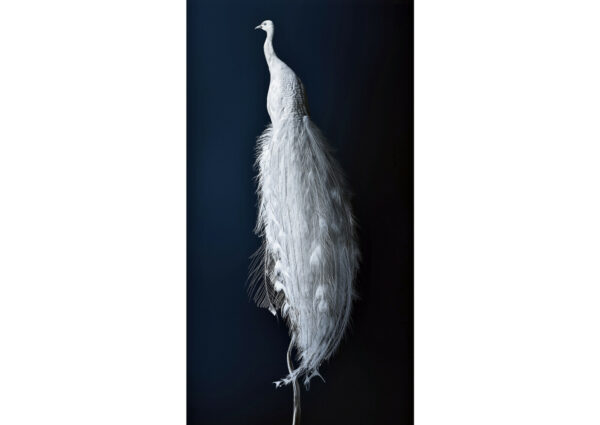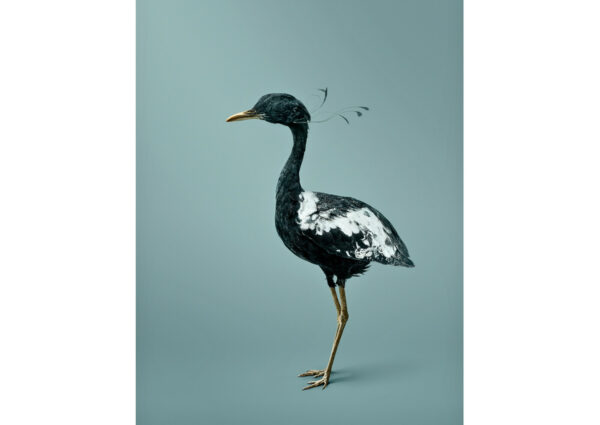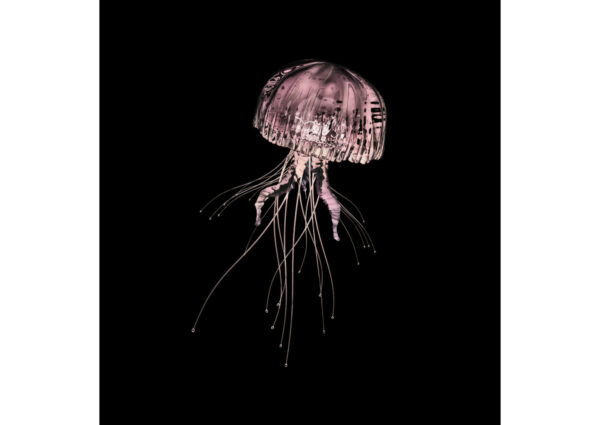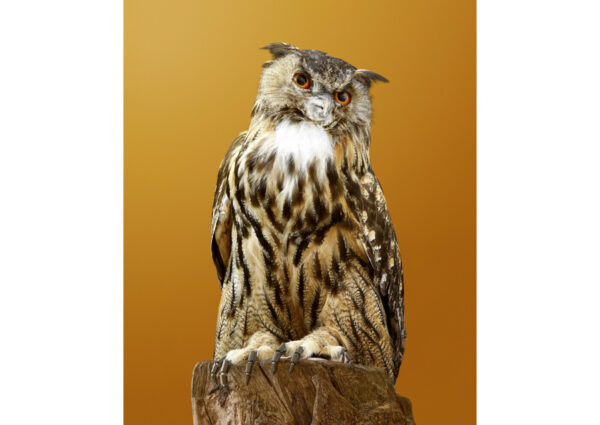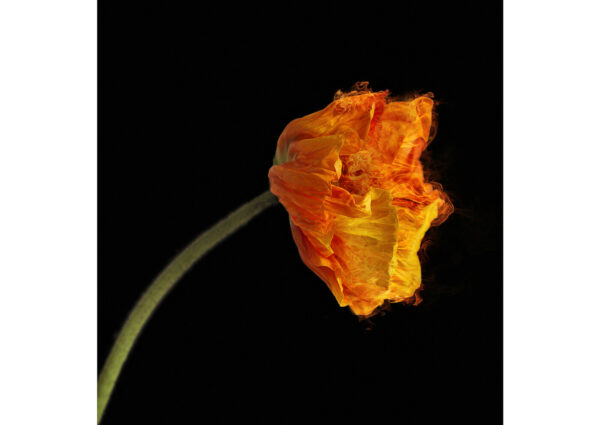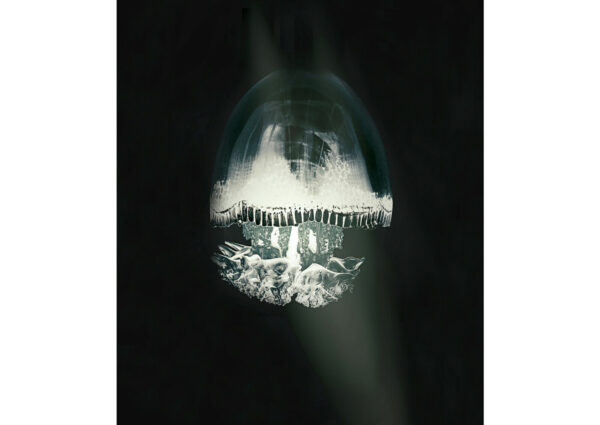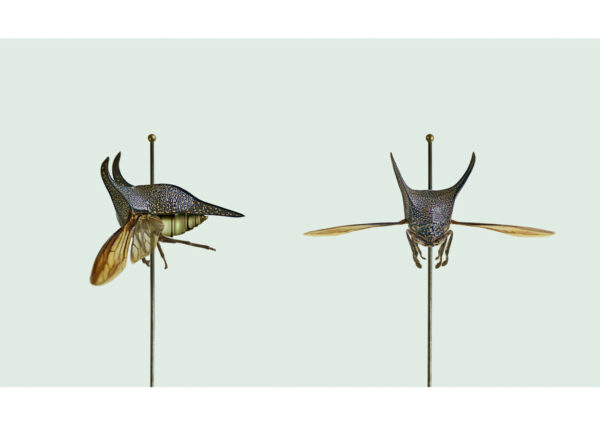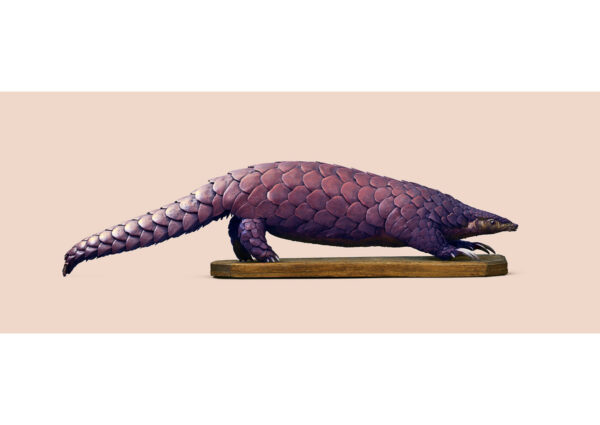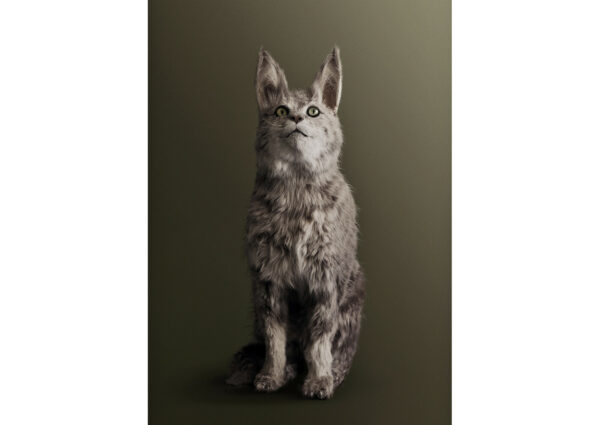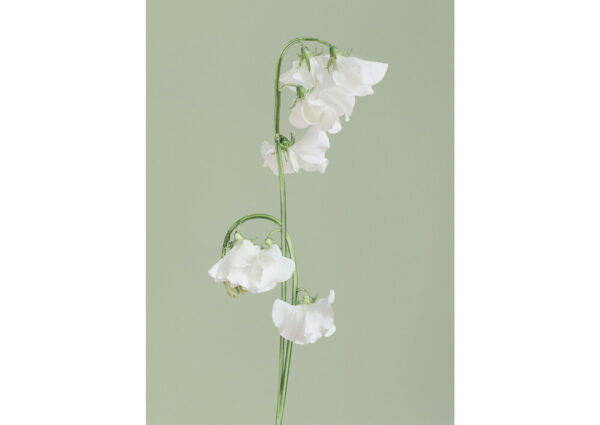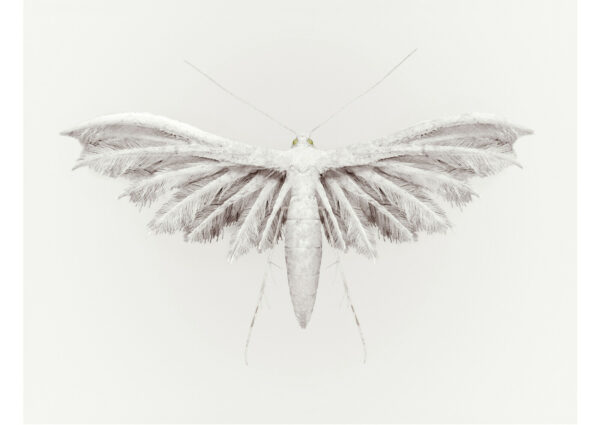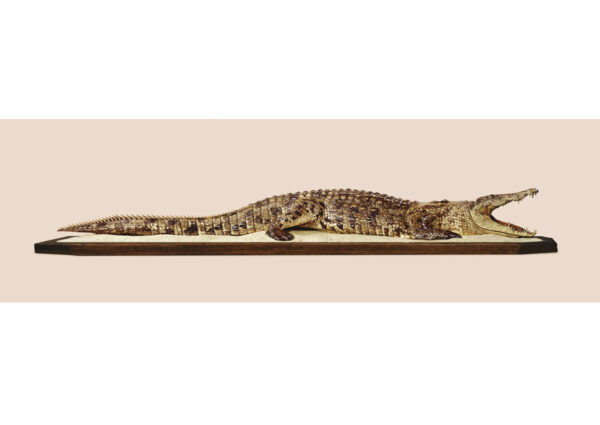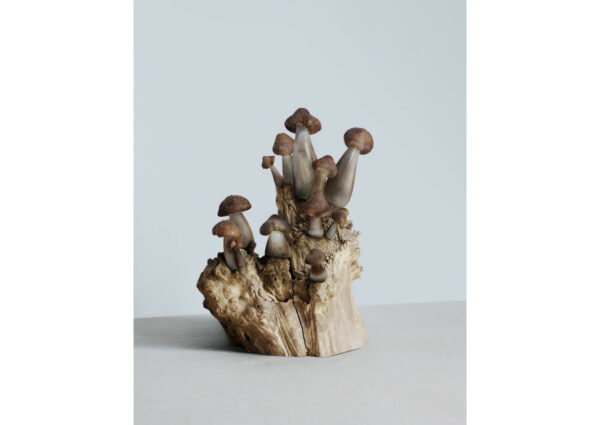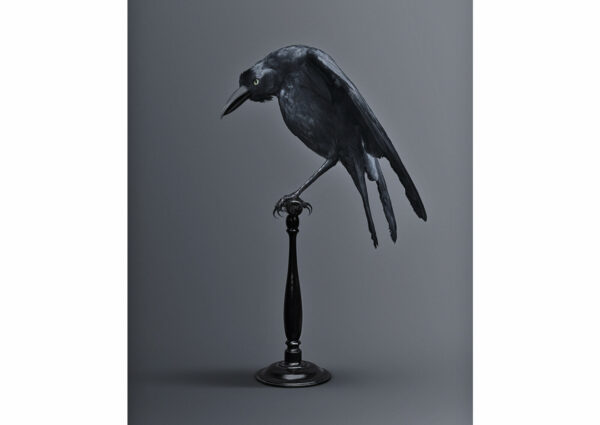Au croisement du surréalisme et de la technologie, le bestiaire Post Natural History imagine l’évolution possible du monde vivant après Darwin. Les photographies révèlent une collection d’espèces en voie d’apparition : un paon à l’exosquelette d’argent serti de diamants, une libellule à l’abdomen de verre doté d’un capteur luminescent mesurant la qualité de l’air, un scarabée au GPS intégré dans son antenne métallique… Gravées sur une plaque en laiton, des explications “scientifiques” légendent les images et renforcent la vraisemblance contenues dans ces représentations. L’étrange familiarité de ce bestiaire poétique interroge l’ambivalence de notre relation à la nature et à la technologie.
Cette série a été exposée dans différents musées, galeries et institutions, notamment le Mori Art Museum Tokyo, La Fondation EDF/Electra, le Domaine des Etangs, le Musée des Beaux Arts des Ursulines, Perth Centre for Photography, Espace Quai Vevey, NAI/Institut d’Architecture des Pays-Bas ou l’Australian Center for Photography à Sydney et au Musée de la Chasse et de la Nature qui a fait l’acquisition de plusieurs photographies et sculptures en 2023 .
Collaboration avec Columbia Pictures pour le film «The Amazing Spiderman II» qui présente plusieurs images de la série Post Natural History.
Post Natural History , bestiaire
Poétiques et méticuleux, les clichés de Vincent Fournier témoignent de la part de rêve et de mystère que les utopies scientifiques et technologiques font résonner dans l’imaginaire collectif. Avec « Post Natural History », jouant les docteurs Moreau, il met en scène une collection de créatures « en voie d’apparition » : insectes, animaux et plantes hybrides, imaginés au croisement de la biologie synthétique et de la cybernétique, et présentés sous forme de planches encyclopédiques. En parcourant ce cabinet de curiosités, on observe un ibis aux pattes de métal résistant à des températures extrêmes, une libellule au fragile abdomen de verre dans lequel un capteur luminescent mesure le taux de pollution, un scarabée pourvu d’un GPS intégré dans son antenne métallique ; plus loin, une « fleur de chair » – sculpture squelette en impression 3D, faite de chair de synthèse – et de curieux organes dont un « coeur incassable » en or qui s’auto-régénère, promesse de vie éternelle, et un cerveau artificiel à vocation télépathique. Saisissant, et troublant… Jusqu’aux cartels « scientifiques », gravés sur des plaques en laiton, qui décrivent les particularités de ces « néo-êtres » et renforcent le réalisme autant que la dimension fantasque des images. Ces espèces pourraient-elles exister dans le futur ? Mêlant histoire, présent et anticipation, recherche esthétique et réflexion sur la relation entre nature et technologie, imaginaire et possible, ce muséum d’histoire potentielle a la beauté bizarre des songes. Fiction spéculative, il pose la question de l’évolution du monde vivant et des limites de notre humanité, appelée à devoir s’adapter à un environnement – inconnu, forcément inédit, hostile peut-être – où les technosciences ne seront plus seulement une extension du corps mais une véritable donnée intime. Bienvenue dans la vie « post-nature ».
Texte : Etaïnn Zwer pour Usbek & Rica #16 – Octobre 2016
Édition
10 + 2 épreuves d’artiste, tous formats confondus
Format
Chaque image a un format unique, entre 32×32 cm et 134×54 cm
Technique
Tirage chromogène sur papier Ilfoflex, contrecollé sur dibond avec encadrement boîte américaine chêne, verre musée et plaque en laiton.
Archives of the Future
At the crossroads of surrealism and technology, the bestiary Post Natural History imagines the possible evolution of the living world after Darwin. The photographs reveal a collection of species in the process of appearing: a peacock with a silver exoskeleton set with diamonds, a dragonfly with a glass abdomen equipped with a luminescent sensor that measures the quality of the air, a beetle with a GPS integrated into its metallic antenna… Engraved on a brass plate, “scientific” explanations caption the images and reinforce the verisimilitude contained in these representations. The strange familiarity of this poetic bestiary questions the ambivalence of our relationship to nature and technology.
This series has been exhibited in various museums galleries and institutions including the Mori Art Museum Tokyo, La Fondation EDF/Electra, Domaine des Etangs, Musée des Beaux Arts des Ursulines, Perth Center for Photography, Espace Quai Vevey, NAI/ Netherlands Institute of Architecture, or the Australian Center for Photography in Sydney and the Museum of Hunting and Nature which acquired several photographs and sculptures in 2023.
Collaboration with Columbia Pictures for the film “The Amazing Spiderman II” which features several images from the Post Natural History series.
Post Natural History , surrealist bestiary of the Future
Poetic and meticulous, Vincent Fournier’s photographs bear witness to the dreamy and mysterious aspects of scientific and technological utopias that resonate in the collective imagination. With “Post Natural History”, playing the role of doctor Moreau, he stages a collection of creatures “in the process of appearing”: insects, animals and hybrid plants, imagined at the crossroads of synthetic biology and cybernetics, and presented in the form of encyclopedic plates. While browsing through this cabinet of curiosities, one can observe an ibis with metal legs that can withstand extreme temperatures, a dragonfly with a fragile glass abdomen in which a luminescent sensor measures the level of pollution, a beetle with a GPS integrated into its metal antenna; further on, a “flesh flower” – a 3D printed skeleton sculpture made of synthetic flesh – and curious organs including an “unbreakable heart” made of gold that self-regenerates, a promise of eternal life, and an artificial brain with a telepathic vocation. Striking, and disturbing… Until the “scientific” labels, engraved on brass plates, which describe the characteristics of these “neo-beings” and reinforce the realism as much as the fantastic dimension of the images. Could these species exist in the future? Mixing history, present and anticipation, aesthetic research and reflection on the relationship between nature and technology, imagination and possibility, this museum of potential history has the bizarre beauty of dreams. Speculative fiction, it raises the question of the evolution of the living world and the limits of our humanity, called to adapt to an environment – unknown, necessarily unprecedented, perhaps hostile – where technosciences will no longer be just an extension of the body but a real intimate data. Welcome to the “post-natural” life.
Text: Etaïnn Zwer for Usbek & Rica #16 – October 2016
Edition
10 + 2 Artist proofs, all formats included.
Format
Each image has a unique format, from 32×32 cm to 134×54 cm
Technique
Chromogenic print on Ilfoflex paper, laminated on dibond with American oak box frame, museum glass and brass plaque.
Post Natural History — Film 3’30
